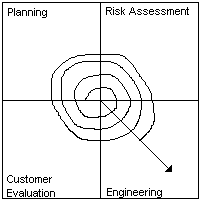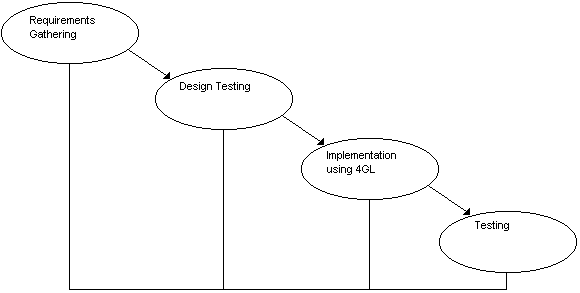
CIS 375 SOFTWARE ENGINEERING
University Of Michigan-Dearborn
Dr. Bruce Maxim, Instructor
Definition Of Software Engineering:
Definition Of High Quality Software:
Software Development Models:
Systems Approach:
{Definition of a system: (a collection of things)
Advantages Of Bounded Systems:
(It is often useful to think of a system as a sub-system, for the purpose of extension).

Software Engineering Approach:
Why Doesnít This Work Well:
Software Lifecycle Models:
Phases:
Models:
Waterfall Model:

Rapid Prototyping Model:

Spiral Model:

Fourth Generation Techniques:
(Usually a tool that generates the code, through the use of a graphical interface).

Capability Maturity Model:
(A Strategy For Improving The Software Process).
Maturity Models:
Level One; Initial Process:
Level Two;
Repeatable Process:Level Three;
Defined Process:Level Four;
Managed Process:Level Five;
Optimizing Processes:How Are Metrics Used?
Benefits Of Process Maturity And Metrics: